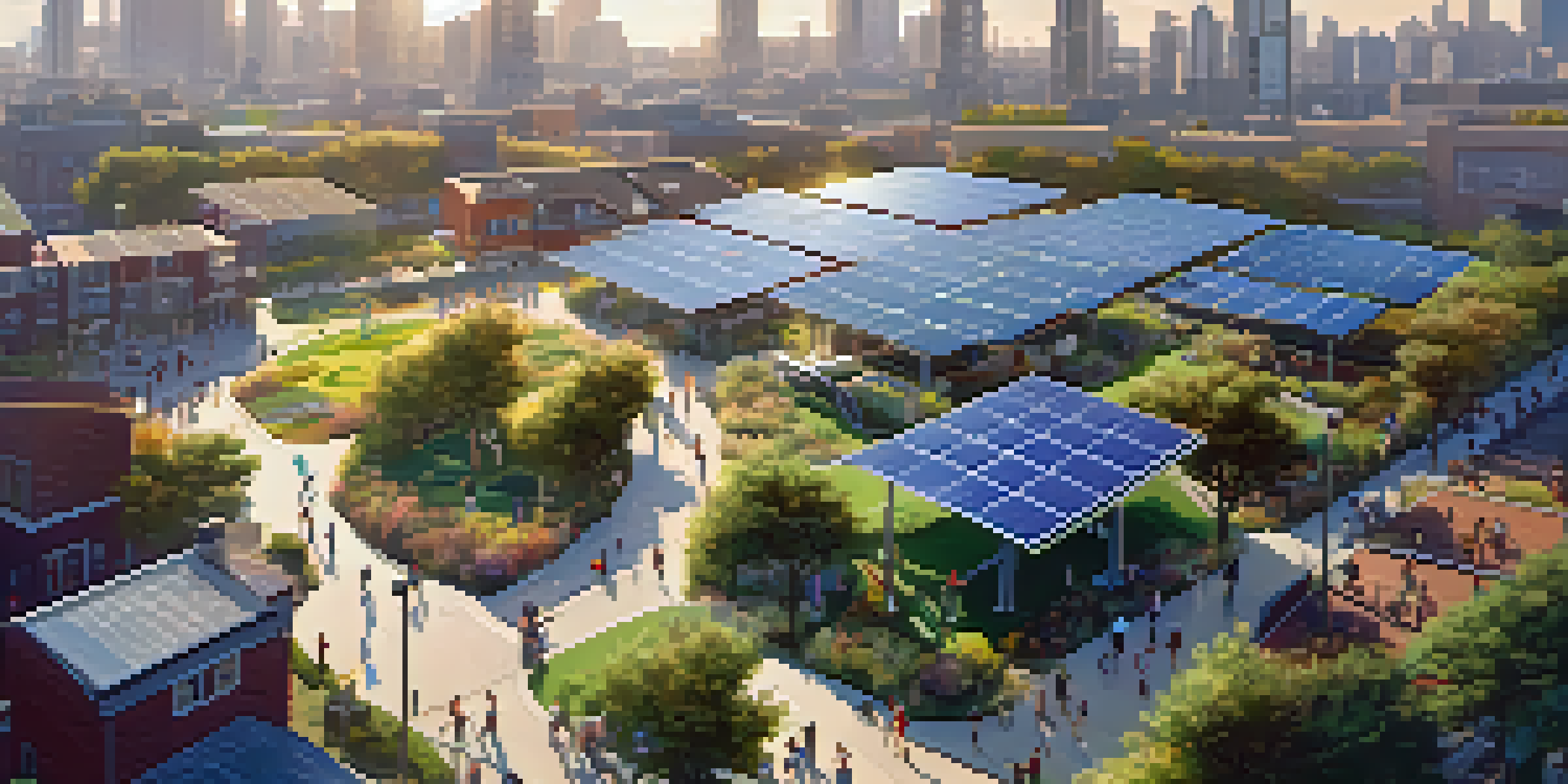Integrating Renewable Energy in Smart City Designs

Understanding Smart Cities and Their Energy Needs
Smart cities utilize technology to enhance urban living, focusing on sustainability, efficiency, and connectivity. With rapid urbanization, energy demands are skyrocketing, making it crucial to find innovative solutions. Integrating renewable energy sources can help meet these demands while reducing carbon footprints and promoting environmental health.
The Role of Renewable Energy in Urban Environments
Renewable energy sources, such as solar, wind, and geothermal, provide a sustainable alternative to fossil fuels. These resources can power everything from streetlights to public transport systems, significantly cutting greenhouse gas emissions. By harnessing renewable energy, cities can create cleaner air and contribute to global climate goals.
Renewables Drive Smart City Growth
Integrating renewable energy sources is essential for smart cities to meet rising energy demands sustainably.
Key Technologies for Integrating Renewables in Smart Cities
Emerging technologies like smart grids and energy storage systems play a pivotal role in integrating renewable energy. Smart grids manage electricity flow efficiently, ensuring that energy supply meets demand in real time. Energy storage systems, such as batteries, allow cities to store excess renewable energy for later use, enhancing reliability.
Benefits of Renewable Energy in Smart City Designs
Incorporating renewable energy can lead to significant economic benefits, such as job creation in green industries. Moreover, cities that prioritize sustainability often attract residents and businesses looking for environmentally friendly options. This shift not only enhances quality of life but also promotes long-term economic resilience.
Community Involvement is Crucial
Engaging residents in renewable energy initiatives fosters support and enhances participation in sustainable practices.
Challenges in Implementing Renewable Energy Solutions
Despite the clear benefits, integrating renewable energy in smart city designs presents challenges. Issues like high initial costs, regulatory hurdles, and public acceptance can slow progress. Addressing these challenges requires collaboration among governments, private sectors, and communities to create effective strategies.
Case Studies: Successful Integration of Renewables
Cities like San Diego and Amsterdam have successfully integrated renewable energy solutions into their smart city frameworks. San Diego's commitment to 100% renewable energy by 2035 showcases a proactive approach to sustainability. Similarly, Amsterdam's extensive cycling infrastructure complements its use of solar energy, setting a global example.
Technological Innovations Enhance Feasibility
Advancements in smart grids and energy storage are pivotal for effectively incorporating renewable energy into urban environments.
Community Engagement in Renewable Energy Initiatives
For successful integration, community engagement is essential. Educating residents about the benefits of renewable energy fosters support for initiatives and encourages participation. Collaborative projects, such as community solar farms, empower citizens to take an active role in their city's energy future.
The Future of Renewable Energy in Smart City Planning
As technology advances, the future of renewable energy in smart city planning looks promising. Innovations in energy efficiency and storage will enhance the feasibility of renewable solutions. By prioritizing sustainability today, cities can pave the way for a greener, smarter tomorrow.